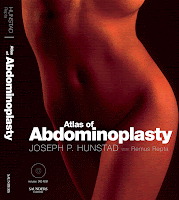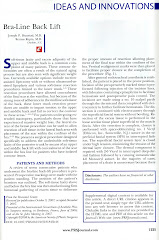
Does this procedure really exist?
Yes, there is actually a procedure called "reverse tummy tuck" or "reverse abdominoplasty". We actually included a separate chapter on it in The Atlas of Abdominoplasty.
The reverse tummy tuck is a unique procedure designed to improve the shape and contour of the upper abdomen while hidding the final scar location in the breast fold.
Who is candidate for the reverse tummy tuck?
Good candidates for the reverse tummy tuck are usually not significantly overweight, have excess skin and soft-tissue laxity primarily above the belly button, and may also be planning on a breast procedure that will result in a breast at the breast fold. The last part is not a requirement since the scar is well concealed but certainly allows performing both the breast procedure and the reverse tummy tuck without additional scars.
Can muscle tightening be performed with reverse tummy tuck?
Yes. Most candidates for reverse tummy tuck are not in great need for muscle tightening, however, if it is deemed beneficial it can be performed. The process of muscle tightening with reverse tummy tuck is very similar to that performed with endoscopic tummy tuck (see earlier post on endoscopic tummy tuck).
Can liposuction be performed with reverse tummy tuck?
Yes. Liposuction can and is often used in combination with all of the tummy tuck procedures.
What about the belly button?
The belly button is usually not released during the reverse tummy tuck and therefore there is no scar around or inside the belly button. The upward pull of the reverse tummy tuck procedure has a natural rejuvenating effect.
Drains?
Although not manditory, drains are still highly recommended.
Look for posts on circumferential abdominoplasty in the near future.
All the best,
Phoenix/Scottsdale Plastic Surgeon










